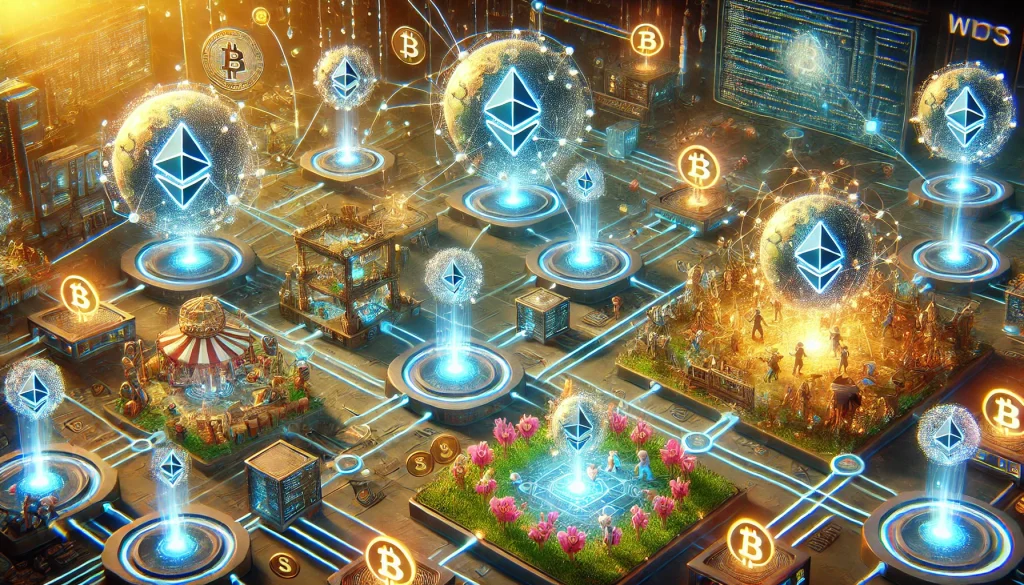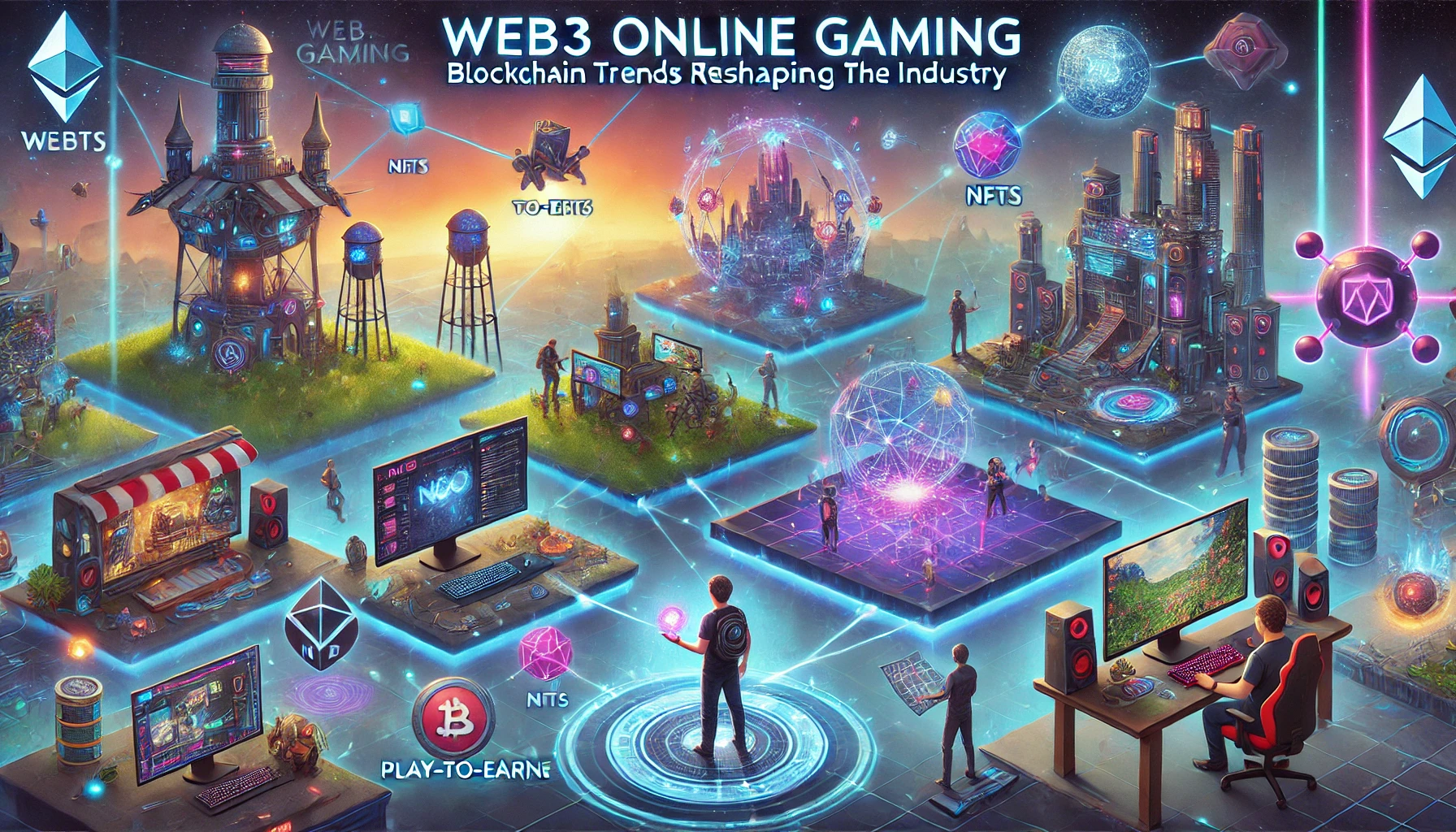The world of online gaming is undergoing a significant transformation with the advent of Web3 technologies. Blockchain and decentralized finance (DeFi) are at the forefront of this change, offering new ways to play, earn, and interact within gaming ecosystems. This post explores the latest trends in Web3 online gaming, highlighting how these innovations are reshaping the industry.
The Rise of Web3 in Gaming
Web3 technologies have introduced a new era of gaming, characterized by decentralization, player ownership, and enhanced security. Traditional gaming models often limit players’ control over in-game assets and economies. In contrast, Web3 gaming empowers players by enabling true ownership and seamless interoperability between games.
Key Trends in Web3 Online Gaming
| Trend | Description |
|---|---|
| Player Ownership | Players own in-game assets, secured in personal blockchain wallets. |
| Interoperability | Assets can be moved across different games, enhancing utility and value. |
| Play-to-Earn (P2E) | Players earn real-world currencies through gameplay achievements. |
| Community Governance | Decentralized Autonomous Organizations (DAOs) allow players to influence game development. |

Player Ownership and Interoperability
Web3 gaming allows players to own their digital assets securely. Unlike traditional games where assets are tied to the game’s servers, blockchain technology ensures that assets are stored in the player’s wallet. This ownership persists regardless of the game’s status.
Interoperability is another groundbreaking feature. Players can transfer assets between different games, enhancing the overall gaming experience. For example, an item earned in one game can be used in another, creating a cohesive and interconnected digital universe (Aurora) (softstack).
The Economic Phenomenon of Play-to-Earn (P2E)
At the heart of Web3 gaming is the play-to-earn model, where players can earn real-world money through their in-game activities. Games like “Axie Infinity” have popularized this model, allowing players to earn by breeding, raising, and battling creatures within the game (Aurora) (Bulb).
Other emerging economic models include:
- Learn-to-Earn: Players earn by acquiring new skills.
- Play-to-Own: Players own in-game assets that appreciate in value.
- Move-to-Earn: Players earn rewards based on physical activities tracked by the game.

Community Governance and Decentralized Economies
Web3 gaming platforms often implement DAOs, enabling players to participate in the decision-making processes. Through voting mechanisms, players can influence updates, changes, or new features, creating a more democratic and community-driven gaming environment (Bulb).
This level of involvement ensures that the game evolves in a direction that resonates with its community. Players can also participate in the game’s economy, trading in-game assets on decentralized marketplaces. This creates new revenue streams and enhances the game’s longevity.
Notable Web3 Games and Projects
CryptoKitties CryptoKitties was one of the first blockchain games to gain widespread attention. It introduced the concept of NFTs through digitally scarce collectibles. Players can buy, sell, and breed digital cats, each with unique attributes (softstack).
The Sandbox The Sandbox is a user-generated content platform combined with a gaming ecosystem. Players can create, own, and monetize their gaming experiences on the Ethereum blockchain. The decentralized marketplace allows creators to sell and trade their creations as NFTs (softstack) (Aurora).
Axie Infinity Axie Infinity reimagines digital pets with a universe where players battle, breed, and trade fantasy creatures called Axies. The game incorporates play-to-earn mechanics, allowing players to earn cryptocurrency through gameplay achievements (Aurora).

Analysis and Opinion
Web3 online gaming represents a significant shift in how games are developed, played, and monetized. The decentralization and democratization of game economies empower players like never before. By providing true ownership of in-game assets and enabling new economic models, Web3 gaming has the potential to revolutionize the industry.
However, challenges remain. Scalability and energy consumption are significant hurdles that need addressing for mainstream adoption. Additionally, the complexity of blockchain technology can be a barrier for both developers and players (Cointelegraph) (Bulb).
The future of Web3 gaming looks promising as developers continue to innovate and integrate advanced technologies like NFTs and DAOs. As blockchain becomes more accessible and user-friendly, we can expect broader adoption and more immersive gaming experiences.
Challenges in Web3 Gaming
- Scalability: Current blockchain infrastructures need to support large-scale gaming environments.
- Energy Consumption: Efficient and eco-friendly solutions are necessary to mitigate environmental impact.
- User Experience: Simplifying blockchain interactions is crucial for attracting mainstream gamers.
Future Trends to Watch
- Integration with VR and AR: Virtual reality (VR) and Augmented Reality (AR) technologies will offer more immersive gaming experiences.
- Cross-Platform Interoperability: Enhancing interoperability among different blockchains will facilitate a more seamless gaming ecosystem.
- Regulatory Frameworks: Clearer regulations will provide stability and encourage investment in Web3 gaming.
Conclusion
Web3 online gaming is reshaping the industry by promoting ownership, tokenomics, interoperability, and community governance. As technology evolves, the synergy between blockchain and gaming will create a more inclusive, player-centric, and innovative gaming ecosystem. Players and developers alike stand to benefit from this new era of gaming.
FAQ
What is Web3 gaming?
Web3 gaming uses blockchain technology to enable decentralized, player-owned gaming experiences with interoperable assets.
How does play-to-earn (P2E) work?
P2E allows players to earn real-world currencies or cryptocurrencies through in-game activities and achievements.
What are DAOs in gaming?
DAOs are decentralized organizations that let players participate in game development decisions through voting mechanisms.
Resources
For more insights into Web3 online gaming, visit:

